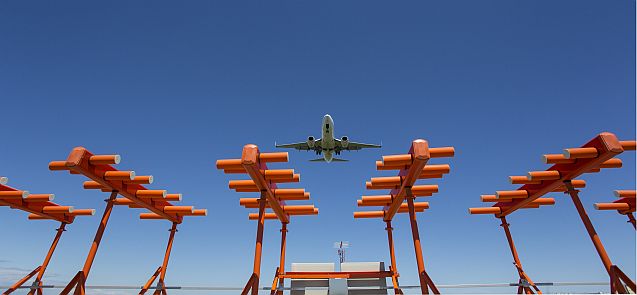
The Nigerian Airspace Management Agency (NAMA) has admitted that many of its navigational aids have become obsolete but would start the modernization of the most critical of them all, communication in the airspace.
The agency has been grappling with the Total Radar Coverage of Nigeria (TRACON), which became inefficient over the years because some of its parts have become outmoded.
However, in a statement issued by the agency yesterday and signed by the Director, Public Affairs and Consumer Protection, Addullahi Musa, NAMA said it would immediately tackle the intractable communication challenges in Nigeria’s airspace and assured that the myriads of problems plaguing communication between pilots and controllers would soon be a thing of the past.
The Managing Director of the agency, Ahmed Farouk promised to immediately fix the communication problem and also declared emergency on power supply, as NAMA’s installations provide 24 hours service to ensure that aircraft fly safely in Nigeria’s airspace and therefore need 24 hours power supply.
The agency disclosed that it spends humongous amount of its revenues on diesel to power its generators and recently considered investing in solar systems.
“The communication architecture of Nigerian airspace is now broadened, addressing issues that were prevalent before. We are dedicated to ensuring seamless communication between pilots and air traffic controllers,” the Managing Director said.
He also disclosed that the Federal Government has acceded to the overhaul and modernization of the communication architecture of the country’s airspace.
Air Traffic Controllers had warned that TRACON’s obsolete parts could threaten safety in the airspace and called for the upgrade of the equipment.
Controllers stressed the need for urgent action to be taken to repair and upgrade the equipment, stating that TRACON had become deficient in its communications and surveillance functions and demanded urgent rehabilitation before it breaks down and jeopardises flight operations in Nigeria.
The controllers also explained that the function of the radar is to provide communication, determine the location, the bearing and range of the aircraft in the airspace and air traffic controllers monitor all the aircraft on the radar screen to ensure the safety of aircraft and guide them to take off and landing.
The Controllers admitted that TRACON has no standby system in the last few years, which means if the current functional system breaks down, it would not be switched to a standby system.
“The TRACON has been on one leg in the last few years (no standby system). NAMA management has not bought spares to replace broken down ones in the last two years. In the last five years NAMA has not renewed the maintenance contract it has with Thales of France, which built the system,” the controllers said recently.
But there are indications that the Federal Government had started the process of renewing the maintenance deal with Thales of France, which built the system.
“We heard that they are trying to upgrade it but the problem persists. It is not that there is total loss in communication but it is not seamless as it ought to be, as recommended by the International Civil Aviation Organisation (ICAO). When pilots call you while entering the boundary of your airspace it has to be clear.
“The communication has to be unbroken, reliable, consistent and continuous transmission. It is expected that at every point communication should be clear. If one goes under, another should immediately overlap, but we do not have back up. This is not acceptable.
“Another problem we have with TRACON is the perennial issue, which is that the radar system does not have back-up. So, if anything happens to the system now we go back to procedural system of control, which is fraught with danger and relies heavily on communication, which is not currently efficient. Communication plays a major role in air traffic control,” a controller told THISDAY.
However, NAMA management over the years has been making efforts to improve communication and surveillance in the airspace.
THISDAY learnt that about two years ago the agency addressed short-term measures by providing VHF that has a minimum of 250 nautical miles and it installed V-Sat in Enugu and Kano to improve communication in the South East and North West corridors and it has also embarked on more installations of similar equipment.
It was expected that NAMA would have completed the installation of Aeronautical Information System (AIS) three years ago which would have buoyed the 14 V-Sats already installed and power them to give full coverage of communication in the Nigeria’s airspace.
It is expected that before the end of this year all the problem mitigating communication in the airspace would have been solved by the agency.






